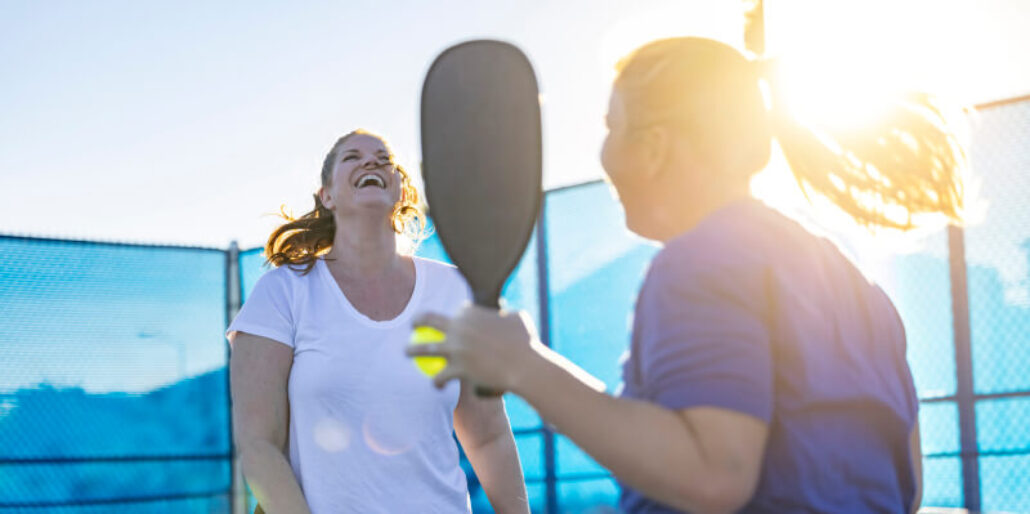Summit Orthopedics hand therapist Shannon Evenson, OTR/L, CHT, shares some common pickleball injuries — and what you can do to get back out on the court quickly.
Have you heard about pickleball? It’s a sport that combines elements of tennis, badminton, and ping-pong into a fun and accessible game that almost anyone can enjoy. But like other racquet sports, pickleball can also result in sports injuries, particularly to the upper body. Summit Orthopedics hand therapist Shannon Evenson, OTR/L, CHT, shares some common pickleball injuries — and what you can do to get back out on the court quickly.
“I am an avid tennis player, so I underestimated how challenging pickleball can be the first time I played,” Evenson said. “The court is smaller, and the racket is smaller, but when you’re getting started with pickleball, remember that it can be more of a workout than you might expect.”
Most common pickleball injuries
The most common pickleball injuries are in the elbow. They include:
- Golfer’s elbow — medial epicondylitis, or “golfer’s elbow,” is an inflammation of the tendons that attach your forearm muscles to the inside of the bone at your elbow.
- Tennis elbow — lateral epicondylitis, or “tennis elbow,” is an inflammation of the tendons that join the forearm muscles on the outside of the elbow.
Both of these conditions are overuse injuries that can happen as a result of forceful gripping of the racket or repetitive wrist motions.
Wrist and hand injuries can also happen in pickleball. Specific issues can include:
- Tendinitis in the wrist
- Flare-up of arthritis or tendon pain in the hand, both arthritis in the base of the thumb and trigger fingers, a form of tendinitis in the hand
In some cases, pickleball players could see shoulder impingement or aggravation of past impingement or bursitis in the shoulder. It’s especially common to reaggravate old injuries, causing symptoms to flare up. “But of all of these upper-body areas, it’s most common to injure the elbow,” Evenson said.
How to recover from common pickleball injuries
“When you first experience an injury, you always want to start with ice,” Evenson said. Icing the affected area for 20 minutes two to four times a day will help with soreness.
Massaging the area, followed by some gentle stretching, will also help promote circulation and ease irritation. After about a week, Evenson recommends switching to heat. “Gentle heat opens up the vasculature of the body. It helps healthy circulation reach the involved joints and tendons,” Evenson said. “It can make massaging and stretching easier as well.”
The best medicine, Evenson said, is always prevention. “Making sure you do a good warmup before you hit the court or field can prevent overuse injuries in the first place,” she said. Doing some simple wrist circles, bending and straightening the elbows, circling the arms, and then doing some gentle volleying for five to 10 minutes is a good basic warmup.
Finally, if your pickleball injury is not improving after a week of self-treatment, it’s a good idea to have an orthopedic specialist check it out. “You may think it’s nothing serious, but what if you’re wrong? The longer you wait, the harder it can be to get it under control,” Evenson said. “We want to prevent something more serious, so when in doubt, check it out.”
More resources for you:
- Learn about hand therapy.
- Find out what hand therapists do.

